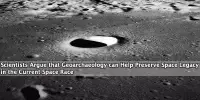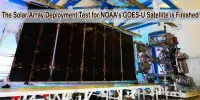We feel like a philosopher when I declare that theoretical physicists like me are exploring why the cosmos exists. However, fresh information gathered by scientists using Japan’s Subaru telescope has provided answers to that very topic.
The universe as we know it now began 13.8 billion years ago with the Big Bang. There should have been an equal quantity of antimatter created at the beginning of the universe for every particle of matter, according to many particle physics theories.
Antimatter, like matter, has mass and takes up space. The characteristics of matter particles are reversed in antimatter particles, though.
When antimatter and fragments of matter clash, they completely destroy each other in a violent explosion, leaving just energy behind. Theories that anticipate the production of an equal balance of matter and antimatter are intriguing because, if they were accurate, the two would have completely destroyed one another, leaving the cosmos devoid of matter.
Since the cosmos is not empty and is full of objects formed of matter like galaxies, stars, and planets, there must have been more matter than antimatter at the beginning of the universe. A little bit of antimatter exists around us, but it is very rare.
As a physicist working on Subaru data, I’m interested in this so-called matter-antimatter asymmetry problem. In our recent study, my collaborators and I found that the telescope’s new measurement of the amount and type of helium in faraway galaxies may offer a solution to this long-standing mystery.
After the Big Bang
The universe was hot, dense, and full of protons, neutrons, and electrons swirling around in a plasma in the first minutes following the Big Bang. These particles also included antineutrinos, which are the antimatter opposites of neutrinos, which are small, weakly interacting particles.
According to physics, the nuclei of light elements like hydrogen and helium started to form just one second after the Big Bang. This process is known as Big Bang Nucleosynthesis. The nuclei formed were about 75% hydrogen nuclei and 24% helium nuclei, plus small amounts of heavier nuclei.
According to the most widely accepted theory in physics, neutrinos and antineutrinos were fundamentally involved in the development of these nuclei, particularly helium nuclei.
Helium creation in the early universe happened in a two-step process. First, neutrinos and antineutrinos were involved in a number of events that changed neutrons and protons from one kind to the other. These processes ceased as the cosmos cooled, stabilizing the protons to neutrons ratio.
We may build simulations to examine the relationship between the relative abundances of neutrinos and antineutrinos in the early cosmos and the ratio of protons to neutrons. Our models predict that there would be more protons and fewer neutrons if there were more neutrinos.
These protons and neutrons formed into hydrogen, helium, and other elements when the cosmos cooled. While hydrogen only has one proton and no neutrons, helium consists of two protons and two neutrons. Therefore, less helium would be generated in the early cosmos if there were fewer neutrons available.
when the nuclei were created during the Big Bang Scientists can still witness nucleosynthesis today and estimate the number of neutrinos and antineutrinos that existed in the early cosmos. They carefully examine galaxies that are abundant in light elements like hydrogen and helium to do this.
A clue in helium
Last year, the Subaru Collaboration a group of Japanese scientists working on the Subaru telescope released data on 10 galaxies far outside of our own that are almost exclusively made up of hydrogen and helium.
The Subaru scientists precisely calculated the amount of helium present in each of these 10 galaxies using a method that enables researchers to identify various elements from one another based on the wavelengths of light recorded in the telescope. Importantly, they found less helium than the previously accepted theory predicted.
With this new result, my collaborators and I worked backward to find the number of neutrinos and antineutrinos necessary to produce the helium abundance found in the data. Think back to your ninth grade math class when you were asked to solve for “X” in an equation. What my team did was essentially the more sophisticated version of that, where our “X” was the number of neutrinos or antineutrinos.
According to the previously accepted hypothesis, the early cosmos should have an equal number of neutrinos and antineutrinos. The number of neutrinos was more than the number of antineutrinos, however, when we modified this theory to make a forecast that fit the new data set.
What does it all mean?
A significant outcome of this examination of fresh data from helium-rich galaxies is that it can be utilized to explain the asymmetry between matter and antimatter. The Subaru data points us directly to a source for that imbalance: neutrinos.
In this study, my collaborators and I proved that this new measurement of helium is consistent with there being more neutrinos then antineutrinos in the early universe. The imbalance in the neutrinos could spread into an asymmetry in all matter through known and likely particle physics mechanisms.
The result of our study is a common type of result in the theoretical physics world. Essentially, we found a plausible mechanism by which the matter-antimatter asymmetry could have been created, but it doesn’t indicate it was created that way for sure. Although the fact that the evidence supports our idea provides a signal that it may be the right explanation, this fact does not prove it.
So, are these tiny little neutrinos the key to answering the age old question, “Why does anything exist?” According to this new research, they just might be.
















